LAUNCHED in July 2002, the game "America's Army" has been a runaway success on the Internet. Primarily a downloadable, online, first-person shooter PC game-and more importantly, entirely free-"America's Army" has provided unique insight into the life of a Soldier through a virtual environment.
The game's next iteration, "America's Army 3," is supported by the Unreal Engine 3 and was released June 17. Col. Casey Wardynski, project director and director of the office of economic manpower analysis at West Point, came up with the idea for the original game in 1999.
Wardynski saw the game format as the medium to tell young Americans about the Army, said Marsha Berry, game producer.
"He came up with this idea because he knew that his primary audience, which are young males, were playing first-person shooter games," Berry said. "The Army makes the perfect first-person shooter game."
The goal of the game is to use entertainment technology to educate potential recruits and the general public about the Army by integrating the "stuff" young adults like with the things developers want to include, like Army values and quality-of-life-related elements, Wardynski explained.
"In the 'America's Army' game, players are bound by the Rules of Engagement and grow in experience as they navigate challenges in teamwork-based, multiplayer, force-versus-force operations. In the game, as in the Army, accomplishing missions requires a team effort and adherence to the seven Army Core Values," according to the game's official site (www.americasarmy.com).
"This 'values' thing is critical, but you've got to bring it alive in ways that are going to get (players') attention," Wardynski emphasized.
The America's Army team said that is exactly what they've done. With the first-person shooter format, the ability to constantly update the game with new content, and the easy use and accessibility (just a free download away!), "America's Army" hit the ground running. The newest iteration promises to be even better.
One of the biggest differences in the game this time around is the use of the Unreal Engine 3. It significantly improves the graphics and abilities of the game, said Wardynski.
It "allows you to do things that are getting very, very close to Pixar quality," he said.
Unreal 3 allows for higher fidelity artwork and graphics and faster processing time on a user's machine, Berry said.
Game developers worked hard to wring all the benefits they could from Unreal Engine 3, known for being difficult to master. Brandon Foster, technical artist and associate producer, explained that adding realism and intricate systems like stat tracking made things a bit difficult, but they persevered.
"Our artists have really gotten very good at the tools and learned how to squeeze all the graphically cool stuff out of it (Unreal Engine 3) in order to achieve the level of fidelity we're looking for," Foster said, "So I think we've been pretty successful."
In addition to accurate and detailed visuals-all characters have all five fingers and weapons reload like the real things-the sound in the game has vastly improved.
"The sound in our game is probably going to be the most authentic shooting sounds you've ever heard in a first-person shooter," Berry said.
"We have the developers down in a berm, where you shoot targets, and they have their sound equipment down there. When the bullets fly by your head (in the game), that's an actual sound of a bullet flying by your head. And it really, really affects the tactical game play," she said.
"You can actually tell where you are on the battlefield because of the sounds around you now," Wardynski agreed.
The "America's Army" developers also incorporated feedback from users at large, making the game more intuitive by tweaking controls.
"We've taken a lot of the feedback that (the players) have been giving us and we've incorporated that into the new version of the game," Berry explained. "For example, we've incorporated a radial menu system, which is very similar to...Xbox games...you just kind of mouse to what you want and click."
"We've made it to where it's very easy for a new user to come in and very easily figure out how to play," she said.
Part of the purpose of AA3, and each previous version of the game, is to make potential recruits more familiar with the Army. Through graphics, the game familiarizes the players with what installations and barracks will look like, and through audio effects, users will have a sampling of combat sounds.
"The idea there is they will feel comfortable if they come in the Army, because they've virtually been there already," Wardynski said.
In addition to having developers in environments that Soldiers would be experiencing, such as a shooting range, the "America's Army" team hooked Special Forces personnel up to motion-capture technology to reproduce authentic movement in the game, Berry said.
As with each previous version of the game, AA3 continues adding elements of realism with the Real Heroes program.
The Real Heroes program takes Soldiers who have been awarded commendations for combat heroism and incorporates them as characters into the game. One such real hero, Sgt. Jason Mike, also helped develop a new military occupation specialty for the game that will be released at a later date: the combat medic.
Mike, a combat medic, was in Iraq in 2005, on patrol in an eastern sector of Baghdad when 50 insurgents ambushed his patrol.
"My vehicle alone was surrounded by 25 insurgents. On the initial dismount of my vehicle three of my guys were wounded, two critically. They couldn't fight anymore. So that left myself and another injured Soldier to fight our way out for 45 minutes straight," he said during an interview.
What he neglected to mention is detailed in his biography on the "America's Army" Web site: while administering emergency care to fellow squad members, Mike fended off insurgents by firing two weapons-one in his left hand, one in his right-in two directions, and began carefully eliminating targets. Once he had more cover fire, Mike also took out an enemy sniper firing on their position. For his heroism, he was awarded the Silver Star.
The Real Heroes program soon recruited him, asking him for recommendations and making him into an action figure.
"You know what, it's kind of weird," Mike said of the toy. "When they first told me, you hear things, and it never really hits you until you actually get one in your hands. But it's pretty overwhelming.
"The biggest thing I tell people...is that action figure isn't about me. The Silver Star isn't about me, it's about the men and women that I served with in Iraq. Because without their help and support, and being there with them on the battlefield, I wouldn't be here today," he continued.
Mike served as the subject matter expert for the development of the combat medic MOS for the game, providing valuable insight and feedback.
"They brought me in and asked me different questions on how a medic would perform certain procedures, how they react to...bleeding or certain injuries. So the actual things we do as combat medics are put into the game," Mike explained.
Being able to advance through the game and unlock new MOSs, like the combat medic, will help give civilians and potential Soldiers an idea of what Army life might be like. "Of course, you can never really simulate being yelled at by a drill sergeant or having a weapon in your hand," Mike cautions.
After the initial release of AA3, additional MOSs will be rolled out later in content updates, including the infantryman, Berry said.
While the graphics and sound of AA3 are impressive, and the variety of MOSs that will become available are dynamic, the first purpose of the game is to educate potential Soldiers and other civilians.
The game attempts to hit on what the Soldier's life is like not only on the battlefield, but also off, Berry explained, and it does that job well. Wardynski notes that the link between behaviors and outcomes embedded in the game moves the play into the realm of values education.
It also serves as a tribute to the men and women in combat.
"This game is for the Soldiers," Mike said. "We have Soldiers that make sacrifices every day, so not only is this game used to show some of the people the things that we do in the military, it's also an educational tool to show people who don't know what the Army does."
"This game is also dedicated to the guy who goes on deployment, who serves their time, who sacrifices. It's for them," he said.
Questions & Answers with Brandon Foster, 'America's Army 3' developer
Q: How are you taking advantage of Steam Cloud'
A: What's currently going out in the 3.0 version is Steam Cloud, which will allow you to save all of your settings and key bindings between computers.
Q: How does persistent stat tracking work in the game'
A: Through your character interface you're going to be able to look at all sorts of things like your estimated survival time based off of how long you survive during each match, your hit locations where you're hitting the enemy the most, or other things like how successful you've been when you've been the VIP or how many different Soldiers you've treated as a medic.
We have a bunch of achievements that you can earn this time around, like analogous Army medals. Those achievements you'll be able to see on your character's page, and they're also tied into the Steam achievements.
Q: How do the medals, ribbons and coins affect the player'
A: They're more just sort of cosmetic bragging rights. They just show their level of progress through the game, how much they've been playing it, stuff like that.
Q: How does player progression work'
A: As you play the game, you are awarded advancement points. Using those advancement points you can then unlock, for this initial release, different advanced individual training for four different specialties...the grenadier, the advance rifleman, the squad-designated marksman and the automatic rifleman.
The more you play online, you'll be accruing advancement points as you play. Ultimately, you will be able to unlock everything.
Q: Are there any new vehicles introduced in AA3'
A: Initially, there won't be any drivable vehicles. You will see different military vehicles around in maps as set dressing, like Humvees, Strykers and Black Hawks that fly overhead on certain missions, but initially there won't be any drivable vehicles.
Q: Will the game include a map/mission editor'
A: Not initially, no. We'd like to be able to add more features, more MOSs and things like that before releasing that to the public so they'll have source material to work with.
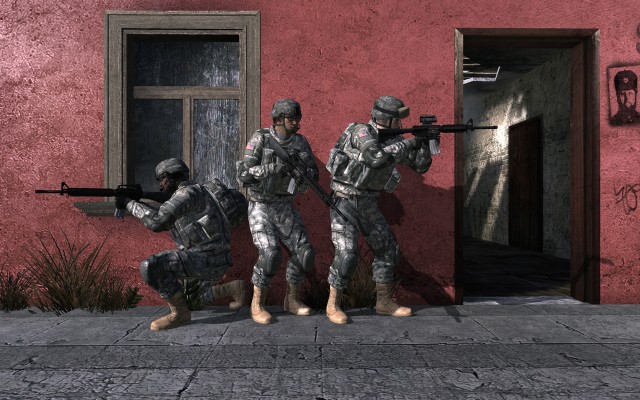
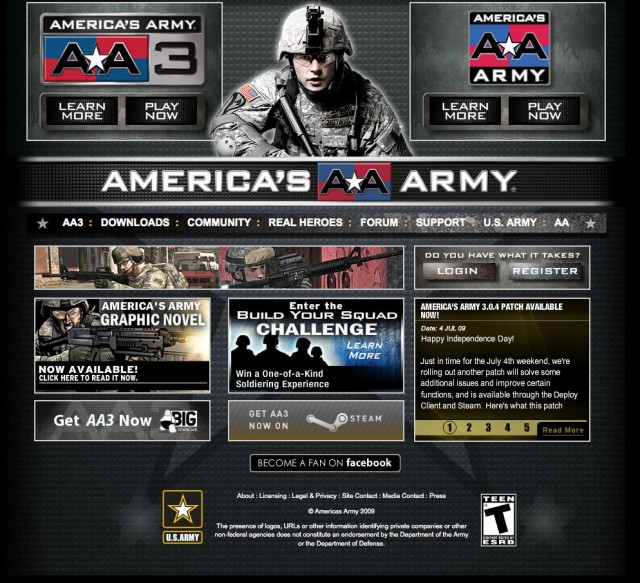
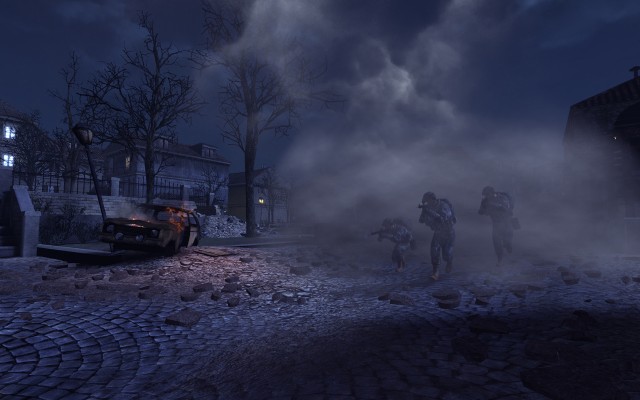


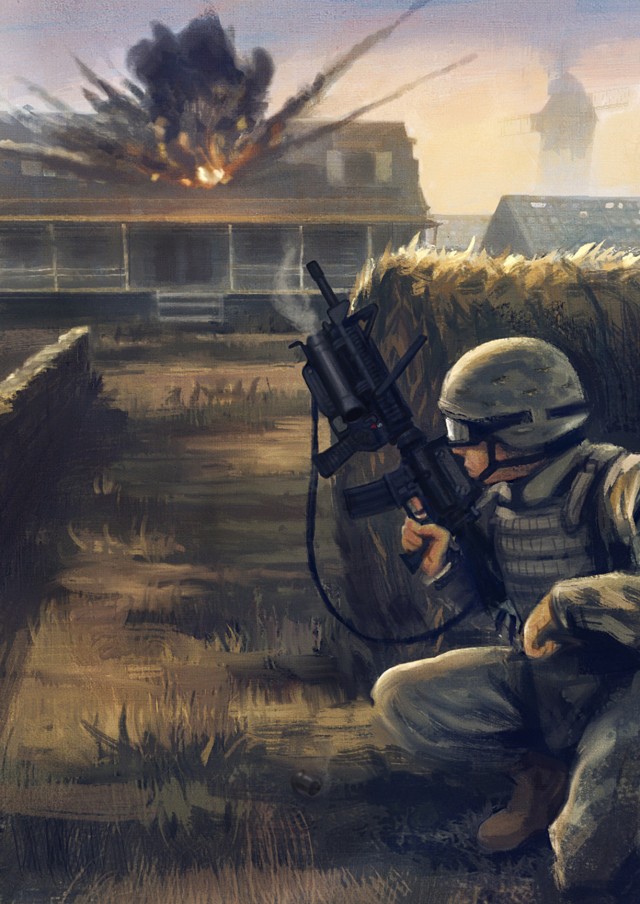
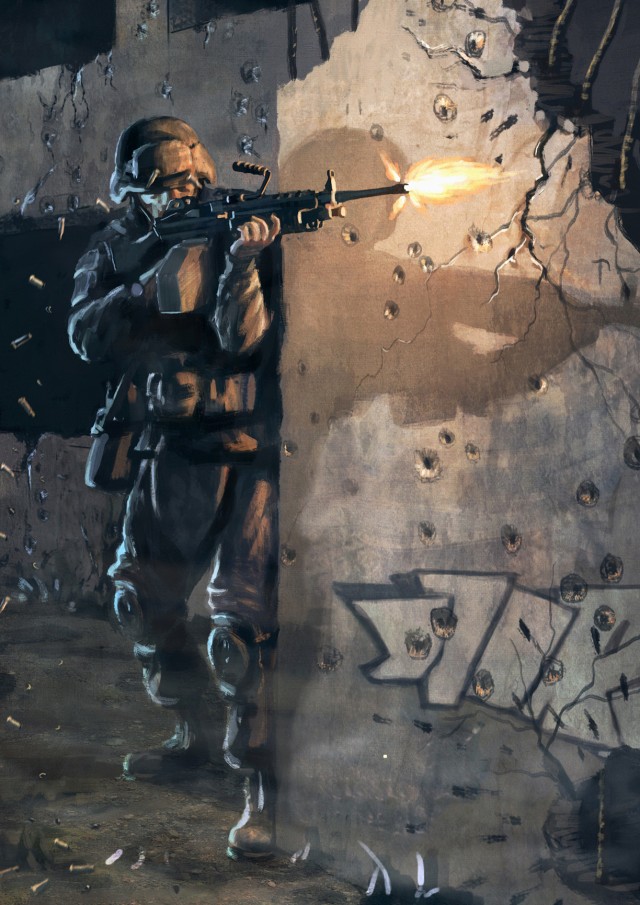
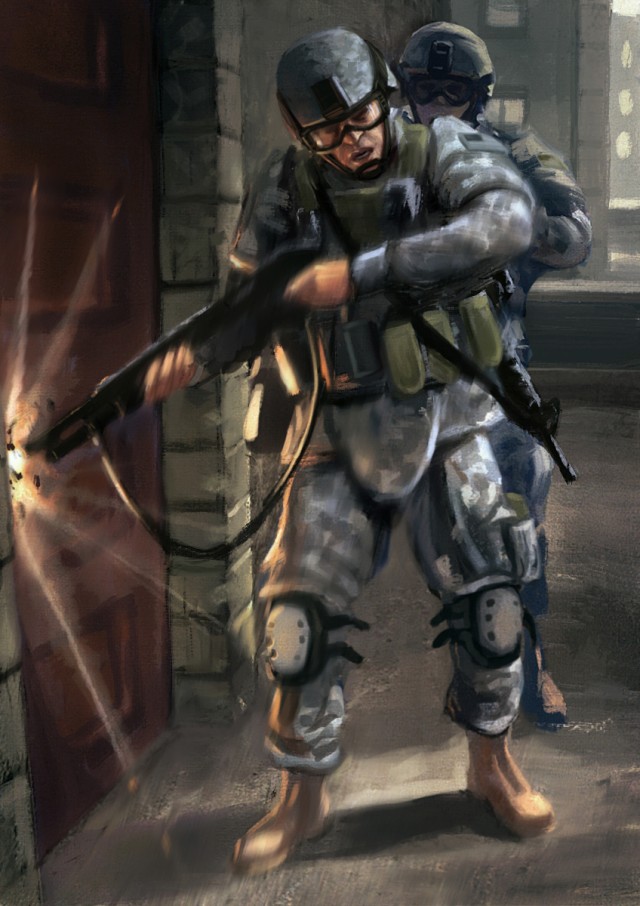








Social Sharing